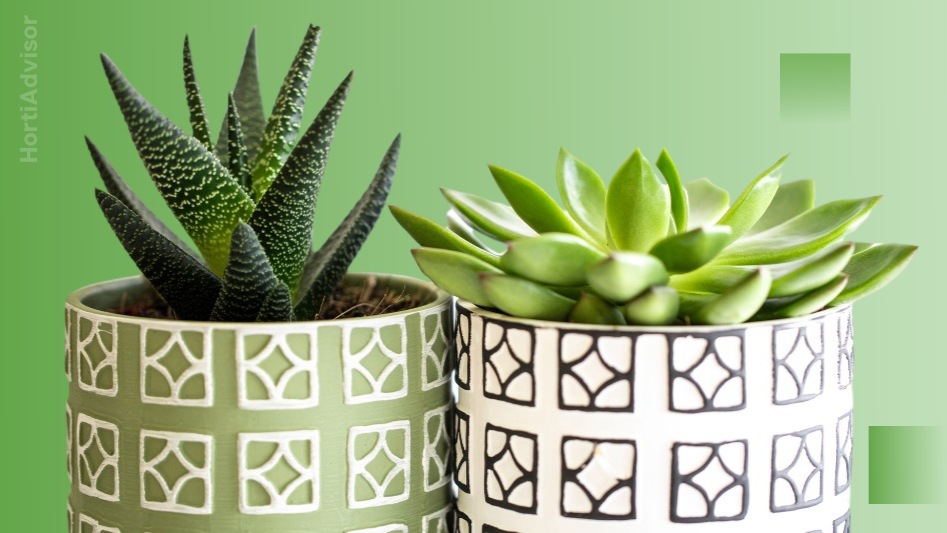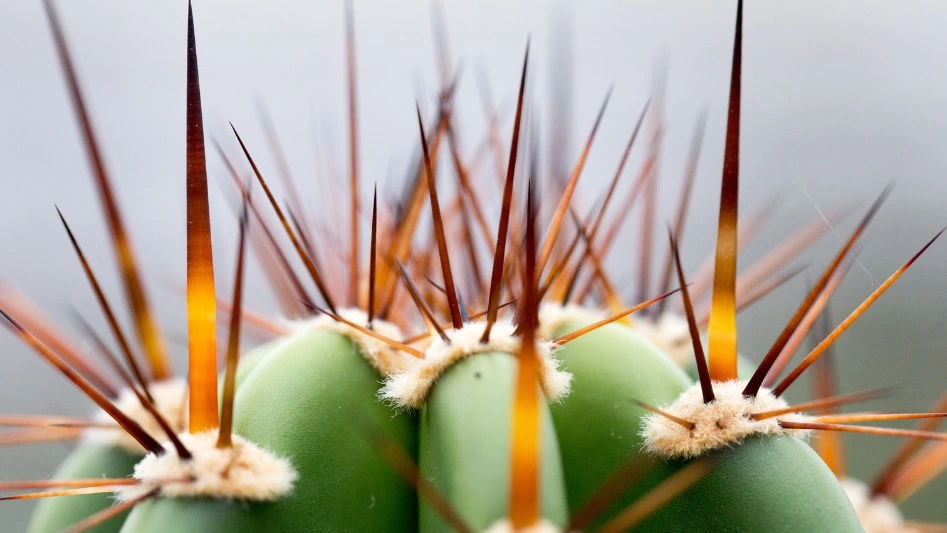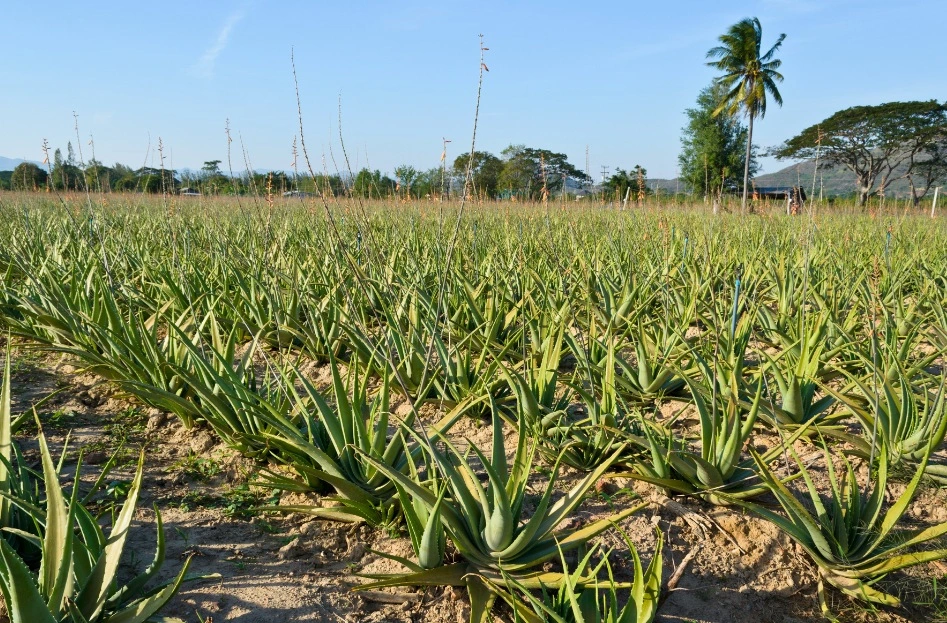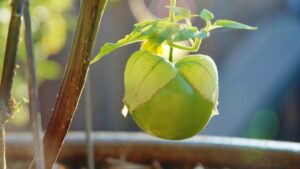Is Aloe Vera a Cactus or Succulent: Classifying the Aloe Plant
Aloe is one of the most famous houseplants. Growing aloe vera plants in homes is more and more common due to their low requirements. Since the terms 'succulent' and 'cactus' are common, the question arises whether Aloe vera is a cactus or a succulent.
 Plant Physiology & Biology
Plant Physiology & Biology Is Aloe Vera Plant a Cactus or a Succulent?
Very often, the question arises whether aloe vera is a cactus or a succulent. All cacti are succulents, but not all succulents are cacti. Put, cacti are succulents with thorns. Even though aloe vera leaves have small thorns on the edges, they are not considered a type of cactus. Aloe vera belongs to Asphodelaceae (Liliaceae) family. Aloe vera is a shrubby or arborescent, evergreen perennial, xerophytic, monocotyledonous succulent, green color plant.
Like all succulents, aloe vera plants can store water in their leaves. The accumulation of water in the tissues allows aloe vera plants to survive during long periods of drought that prevail in the arid environments in which they naturally occur. The stored water is then gradually used up by the aloe vera plant during periods of drought.

Resistance to lack of water has made the aloe vera plants readily cultivated as potted plants. Aloe plant doesn't require direct sunlight. Aloe plants grown indoors can survive for a long time if appropriate care is given.
What Kind of Plant is a Cactus?
The natural area of occurrence of cactus plants from the Cactaceae family is the dry climates of North, Central, and South America. The exception is plants of the genus Rhipsalis. They can be found in large part in North Africa.
Cacti accumulate water in their stems, so they are called stem succulents. They differ from other succulents in that they have an areola. In addition to thorns - shoots, flowers, and cacti fruits also grow from the areola.

Cacti develop a shallow, extensive root system that allows them to penetrate the soil extensively in search of moisture. The cactus's roots grow in width, which increases the chance of obtaining sufficient water from dew or rainfall.
The reduction of leaves in cacti results in a reduction of the transpiration surface. The fleshy part of the cactus family plants are stems, which store water and take over the assimilation function after leaf reduction.
Leaves with an assimilative function with a leaf blade typical of dicots develop plant species only within the genus Pereskia.
Plants from the genus aloe are considered the easiest to grow and are an ideal solution for people who forget about regular watering. The best place for cacti will be a sunny position with an ambient summer temperature.
Some cacti growing in natural conditions are under complete protection, such as Cephalocereus sinensis growing in the Valley of the Elders in the USA.
Most Popular Cacti
- The old man cactus (Cephalocereus sinensis)
- The golden barrel cactus (Echinocactus grusonii)
- Monstrose apple cactus (Cereus peruvianus ‘Monstruosus’)
- Pincushion cactus (Mammilaria)
- Red cap cactus (Gymnocalycium mihanovichii friedrichii "Rubra")
- Bunny ears cactus (Opuntia microdasys)
- Christmas cactus (Schlumbergera truncata)
- Mistletoe cacti (Rhipsalis)
What Kind of Plant is a Succulent?
Succulents are plants with fleshy, often colorful, thick leaves. They belong to the group of xerophytes that have adapted to live in conditions of limited water availability. Therefore, they tolerate extended periods of drought well. They can store excess water in the aquifer located in the stem (stem succulents), root (root succulents), or leaves (leaf succulents).

The surface root system of succulent plants enables efficient water intake during rainy periods. Succulents, similarly to cacti, have structural features and mechanisms protecting against water loss, e.g., waxes on the skin's surface, leaves transformed into thorns, stomata closed during the day, and thick cuticles.
Most Popular Succulents
- Aloe vera (Aloe barbadensis)
- Century plant (Agave)
- Jade plant (Crassula ovata)
- Mexican snowball (Echeveria)
- Spurge (Euphobia)
- Ox-tongue (Gasteria)
- Haworthia
- Lifesaver cactus (Huernia)
- Kalanchoe
- Stonecrop (Sedum)
- Groundsel (Senecio)
Are All Cacti Succulents?
Due to their anatomy, all cacti are stem succulents, but not all succulents are cacti, even though many have become very similar to their spiny cousins.
What's the Difference Between a Cactus and a Succulent?
Both cacti and succulents prefer similar growing conditions: a sunny position, well-draining soil, and a small amount of water in the substrate. They do not tolerate root flooding and frost. When grown in pots, succulents are more tolerant of indirect sunlight. Cactus prefer a sunny location. Well-lit window sill with the full sun will be perfect when grown indoors.
The fundamental differences between a cactus and a succulent focus mainly on their anatomical structure. Primarily external appearance and method of reproduction.
Leaves Versus Spines
The most noticeable difference between a succulent and a cactus is the lack of thorns in succulents. The thorns are gathered in minor white points visible on the cactus stem - areoles. Unlike cacti, succulents do not produce areoles. It is one of the main differentiating features between cacti and succulents.

Flowers
Many cacti produce large, fragrant, bright flowers that bloom at night. Moths and bats pollinate cactus flowers that bloom at night. Day butterflies bees pollinate cacti that bloom during the day. Flowers of succulents are small, usually inconspicuous, and pollinated mainly by bees. After pollination, cacti bear fruits that participate in their reproduction and are absent in succulents.


Stems
Cacti have fleshy stems adapted to store water and are capable of photosynthesis. On the other hand, succulents have thick, fleshy leaves adapted to water storage.
Understanding the Key Differences Between Cacti and Succulents: A Comparative Table
| Differences | Cactus | Succulent |
|---|---|---|
| Leaves | Strongly reduced | Present |
| Thorns | Present | Lack |
| Root system | Expansive, shallow, spreads strongly in width | The roots are deeper than in the case of cacti (in root succulents - a thick, tap root system) |
| Stalk | Strongly thickened | Variable for individual species |
| Flowers | Yes | Yes |
| Type of flowers | Bright, large, complex flowers | Simple, small in size |
| Pollinators | Butterflies, bees and bats | Usually pollinated by bees |
| Fruits | Present | Lack |
| Growth height | From a few centimeters to even several meters, depending on the species | 3 cm - 150 cm |
| Breeding | Leaf and stem cuttings | Seeds, ofsets |
| Water preference | Low | Low, but succulents are more sensitive to water loss than cacti |
| Light preference | Full sun | Indirect light |
| Soil preference | Permeable, airy soil | Permeable, airy soil |
| Fertilization needs | Little | Little |
| Type of photosynthesis | CAM | CAM |
| Ease of cultivation | Easy | Easy |
Summary
Although it resembles a cactus plant, the aloe vera plant is a succulent that accumulates water reserves in its leaves, which is why it belongs to leaf succulents. However, we should remember that not all succulents are cacti. Cacti are stem succulents.
There are many differences between succulents and cacti. Despite the different structures, sizes, or flowering methods, succulents and cacti are widely cultivated for their decorative qualities in the ground and containers. Ease of cultivation and low water needs make these low-maintenance plants recommended for beginner gardeners.







